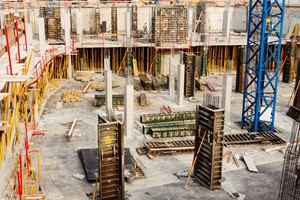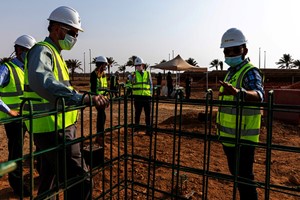2023 appears to be a year of challenge and change as the Canadian construction industry grapples with ongoing problems such as the labour shortage while continuing to move toward integrated project delivery to achieve greater efficiency.
The Canadian labour shortage will continue challenging the industry. Not enough people are joining construction, which will mean a continued labour shortage in 2023. According to the Canadian Construction Association, 22 per cent of the Canadian construction workforce will be retiring by 2028. The loss of that experience and knowledge is a significant concern.
In addition to attracting more young people to the industry, technology will continue to help construction organizations do more with the workers they have. Streamlining processes with technology will reduce the time spent on non-productive tasks out in the field, and will enable employees to focus on more pressing work.
Crane & Hoist states that labour technology is going to have a big impact in 2023; in particular, scheduling tools that help get the right people in the right place at the right time will become more important than ever.
Provinces and organizations will continue to highlight the industry to potential workers. Ontario has made an effort to introduce students to construction during elementary school. It also made it easier to transfer credentials for workers entering the province, and recently expanded its program allowing students to take apprenticeships while in high school.
Heavy Equipment Guide reports that Canada leads other regions with use of drones. According to Dodge Construction Network's 2022 Top Business Issues for Specialty Contractors Report, thirty per cent of large or very large companies surveyed have already implemented site cameras, drones, and onsite sensors, compared to U.S. companies with an average of 19 per cent. In 2023, drone usage will continue to grow to identify hazards and improve site safety.
A Databid blog titled 'Construction Demand in Ontario Sees Sustained Demand Through 2026' states that demands created by major infrastructure projects will increase the non-residential construction work force by 23,000 (an increase of 12% of the 2021 labour force) through 2026. BuildForce Canada reports that recent career promotional activities are showing signs of success. In the non-residential sector, the number of new entrants to the industry are expected to exceed the number of workers exiting due to retirements.
Global Data states that the Canada construction market size was $325.1 billion in 2021.The market is projected to grow at an AAGR of more than 2% during the period of 2023 to 2026. Growth in the forecast period will be supported by investment in housing, transport, and energy infrastructure projects. The industry will also be supported by public projects.
According to BuildForce, the non-residential sector is projected to grow across the forecast period, as major projects drive demands higher to near term peak between 2024 and 2026, adding more than 23,000 workers by 2027 compared to 2021 levels. Key projects will include:
- Public transportation LRT (light rail transit and subway projects in major urban centres)
- Ongoing nuclear refurbishments at Bruce Power and Ontario Power Generation
- Major health-sector and other institutional projects across all regions
Forecasting the 2023 construction market is harder this year than it has been in the past. That's because you have to measure in industry-specific market conditions, including price increases, interest rate hikes, product shortages, and concerns over the long-term demand. What's different about this year's construction outlook are the concerns about a possible 2023 recession and figuring out how (or if) any downturn will affect your company's business and local market's economic conditions.
by Judy Lamelza













